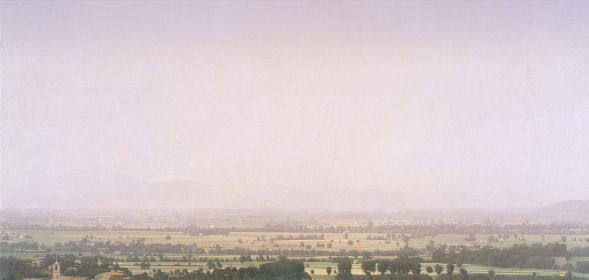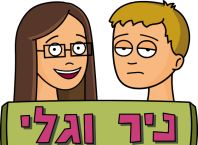Art endures and permeates the cultural consciousness in ways that defy definition and predictability. In the current scene, where all borders, limits and forms have been crossed, extended and transformed beyond recognition, figurative painting is perhaps the most daring act of transgression.

The exhibition Fields of Vision: Landscapes by Israel Hershberg, curated by Amitai Mendelsohn, which recently opened at the Israel Museum, Jerusalem creates a space for contemplating three landscapes painted by the artist over the past ten years. Situated at one end of the hall, the paintings, one on each of three walls, form a kind of enclosure with two benches that invite the visitor to linger. A place for contemplation and meditation, where one might look closely at the paintings, gazing inward, and yet, out, onto the two views of Umbria and one of Tel Kakun in the Hefer Valley in Israel.
Born in Austria and educated in the U.S., Hershberg moved to Israel in 1984. He is the founder and director of the Jerusalem Studio School, distinctive in its emphasis on drawing and painting through the study of the human body, landscape and the works of the great masters. Since its inception in 1998, the school has established a significant presence in Israel, with a fine cohort of graduates from the Master’s Class program. The school also offers art courses open to the public, and maintains a hall of casts, with plaster casts struck from original sculptures spanning 3000 years of art history, open to the public as a visual resource. Each spring, the school hosts the annual Jerusalem Landscape Painting Marathon, a two-week workshop open to the public and taught by a visiting artist.
Hershberg is known for painting stills life and interiors, often with an isolated object as a focal point, expressed with clarity, meticulous attention, and fine detail. Cow’s Tongue No. 74, part of the museum’s permanent collection, is an example of this direction in his work. Yet in looking at this painting, the table, wall and floor hold no less fascination for me, and convey as much as the bleeding cow’s tongue in their midst.

The paintings in the current exhibition are quite different in appearance. Having the good fortune to see the paintings in the presence of the artist, I was curious to know whether he felt a difference in the act of observation, whether his subjective experience of painting these landscapes was different from his work on a still life.
“No,” said Hershberg, and then continued, saying, “Painting can be based on observation but it is a work of the imagination, it’s a fiction. Much as I like to process the concrete world, to peer out on it, it is the responsibility of the painter to stress that fictional quality in the work, as did Vermeer… . It’s not real, it’s not a reflection, it’s a formation.”
Among its other pleasures, the exhibition offers a tantalizing vision of the future, and a glimpse into the artist’s process, in the form of a small study, From Soratte, mounted just at the entrance to the exhibition.

Fields of Vision: Landscapes by Israel Hershberg
On exhibit in the Focus Gallery through February 4, 2013, Israel Museum, Jerusalem





